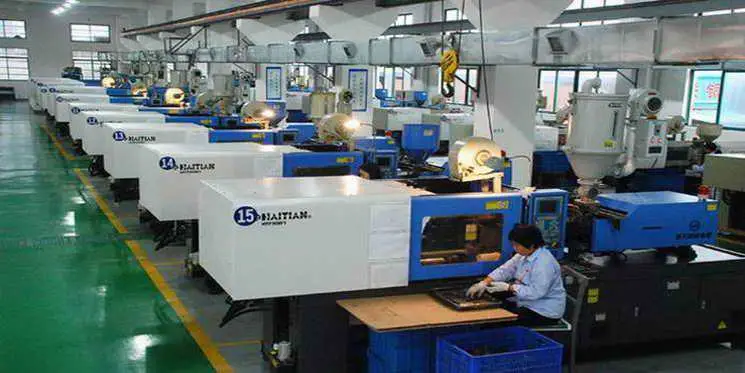What are the reasons for the unstable size of plastic products and how should plastic manufacturers solve them?
(1) Defect features
The main manifestation of unstable size of Plastic Products is that the ability of plastic parts to maintain an accurate shape during plastic manufacturing is poor, and the size is unstable.
(2) Causes of defects and elimination methods
The unstable dimensional size of plastic product is mainly affected by injection molds, injection molding process, equipment, raw materials, etc., and the specific analysis is as follows.
- Injection mold
(1) The mold produced by the injection mold manufacturer is not rigid enough, and the mold will deform after being subjected to force, and the mold will also deform, making the plastic part size unstable. To this end, the mold's rigidity should be strengthened.
(2) If the mold's guiding accuracy is poor and the positioning is not accurate enough, it will lead to unstable dimensional size. To this end, the guiding accuracy of the guiding element should be checked and the clearance should be within the permissible range.
(3) The mold cavity is severely worn due to soft material or excessive use, and the mold cavity size is seriously deviated from the requirement, and the plastic part is bound to exceed the tolerance. To this end, it must be repaired, restored to accuracy, or replaced with a mold.
(4) When plastic factory provides injection molding services, the design and manufacturing accuracy of the molds used are relatively low, and it is difficult to meet the requirements by processing plastic parts. To this end, the design and manufacturing accuracy of the molds should be improved.
(5) For plastic parts with high wall thickness requirements, if only the guide column and guide sleeve can not guarantee accuracy, the size of the plastic parts will not be very accurate. To this end, other auxiliary positioning devices must be added.
(6) For multi-cavity molds, it is difficult to achieve complete consistency due to the processing errors between each cavity. In this way, the size of the plastic parts obtained is difficult to be the same. If the plastic parts in each cavity are to meet the requirements, the processing accuracy must be strictly controlled to ensure that the dimensional accuracy is within the permissible range.
(7) For the plastic parts with the wall thickness of one-mold and one-cavity molding, the thickness error is generally caused by the installation error of the mold and the poor positioning, which causes the relative displacement of the mold cavity and the core to be offset. To this end, the guiding and positioning device should be strengthened to ensure accurate positioning.
(8) Since plastic shrinks during molding and the shrinkage rate of each plastic is different, the shrinkage of plastic should be considered in the mold design to affect the size of the plastic parts. This is very important, but it is also difficult.
(9) In the production of molds, in order to facilitate the repair of molds, the mold cavity is generally made smaller than the required size and the core is made larger than the required size, leaving a certain amount of mold repair margin.
- injection molding process
(1) If the melt injection time and holding time are too short, the melt cannot be fully and evenly distributed in the mold cavity, which results in different densities in different parts, resulting in unstable dimensions. For this reason, the injection time and holding time should be extended appropriately.
(2) If the mold temperature is too low, the melt flow rate in the mold cavity varies greatly, and the cooling rate is also different, which makes the size of the molded plastic parts unstable. For this reason, the mold temperature should be controlled within an appropriate range.
(3) If the injection pressure is too low and the injection speed is too low, the flow of the melt during injection is not stable enough, resulting in unstable dimensions. For this reason, the injection pressure should be increased appropriately.
(4) The molding operating conditions also have a certain influence on the size of the plastic parts, such as increasing the injection pressure, increasing the melt temperature, reducing the mold temperature, increasing the cross-sectional area of the gate and the injection time, which can reduce the shrinkage rate of the plastic parts. Therefore, it is possible to change the size of the plastic parts by changing these molding parameters, but the size change is relatively small.
- injection molding equipment
(1) If the injection molding machine feeding system is not stable, the supply of the melt is also not stable, and the corresponding plastic part size is also not stable. For this reason, the feeding system should be repaired to ensure normal operation.
(2) If the heating system at the barrel and nozzle is not working properly, the melt temperature will fluctuate greatly, which will lead to unstable plastic part size. For this reason, the heating system at the barrel and nozzle should be repaired to ensure normal operation.
(3) If the speed of the injection molding screw is unstable and the stop action fails, the injection volume of the injection molding machine will fluctuate greatly, which will make the size of the plastic parts unstable. For this reason, the transmission system should be repaired to ensure normal operation.
(4) If the plasticizing capacity of the injection molding machine is insufficient, the capacity is insufficient during injection, which leads to unstable plastic part size. For this reason, the plasticizing capacity should be adjusted or a large-capacity injection molding machine should be replaced.
(5) If the temperature control system of the injection molding machine fails, the temperature control fails, and the melt temperature is unstable, so the size of the plastic parts is unstable. For this reason, the failure should be carefully checked and eliminated.
4) Raw materials
(1) If the size of the raw material particles is not uniform and the powder material is too much, such materials with a large difference in particle size are difficult to plasticize evenly, and the plastic parts obtained are unstable in size. For this reason, the raw material particles should be basically uniform, and powder material should be screened out if necessary.
(2) If too much recycled material is mixed into the raw material, the addition of recycled material will increase the difficulty of uniform plasticization, which will cause instability in the size of the plastic parts. For this reason, the amount of recycled material added should be controlled.
(3) Many raw materials, although of the same brand (such as resin), have different properties due to different origins and manufacturers, which leads to unstable plastic part size. For this reason, the formula should be changed to adapt.
(4) The shrinkage rate of crystalline resin is larger than that of non-crystalline resin, and the range of shrinkage rate variation is also larger. The different properties of these resins have a significant impact on the dimensional stability of plastic parts. Therefore, the various properties of various resins should be clearly understood.






